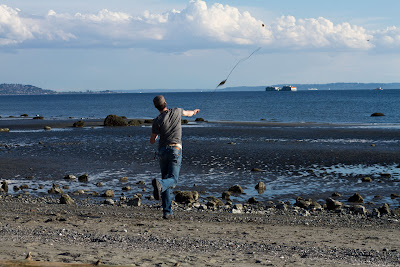 |
| slinging eggs at the broadside of a barn... I had the barn owner's permission |
As the technological advancement of a weapons increases, the skill required to work them, (seemingly) decreases. Since the sling is only one step up from your throwing arm, having almost no technological complexity of any kind, save that of the lever...The Sling is All Skill
Contrastingly, my first shot with a sling landed on my right foot, my second one went backwards, my third went straight up in the air and landed about a foot from me taking my sling with it. The second time I went slinging I was aiming at the the broad side of a building standing about 30 meters away. I slung 10 walnuts, never even touched the building, ironically I almost hit a squirrel. Good thing I was slinging walnuts...hey maybe that explains the squirrels... BUT at least they all went in the general direction of the building... I was already getting better.
Only practice has improved my slinging, but I'm still not keeping track of how many times I hit my target, rather, how large or small my angle of error is on either side. I'm still just getting close. Ok once...once I hit a telephone pole from 20 paces.
I think this is what I like about the sling, there's some difficulty to surmount, skill yet to be obtained. What slinging stories do you have? Post them in the comments!
with much yet to obtain...
mr. slingmoore
Slingmoore


